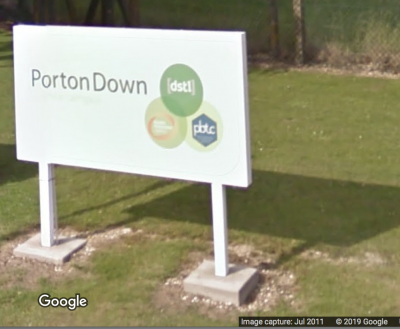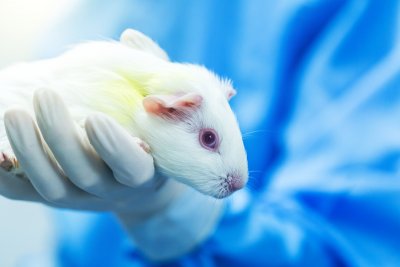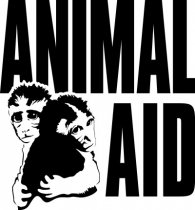Stop warfare experiments
Warfare experiments – conducted using nerve agents, chemical or biological weapons or even simulated blasts – can involve the use of living animals. As you would expect, this can lead to terrible, prolonged suffering followed by death.
Animal Aid is determined to see a ban on all such warfare experiments – please help us stop this needless suffering.
What does Porton Down do?

Examples of warfare experiments on animals
Nerve agent experiment on guinea pigs
Guinea pigs had a nerve agent called VX, which was made at Porton Down, applied to their backs in order to see how a chemical – known as a bioscavenger – would alter the effects of VX. The animals were observed after being poisoned and were given a score for their symptoms – the higher the score the worse their condition. Symptoms included ‘gasping’ and ‘writhing’. Animals not dead at the end of the experiment were killed and dissected. Read more.
Antidote to nerve agent experiment on
guinea pigs
More guinea pigs, this time all male, were exposed to VX.
The fate of one group is outlined: ‘The conditions of animals treated with atropine alone continued to deteriorate throughout the study until death’ and these poisoned animals
‘died between 2 and 6h post-poisoning’.
Read more.
Mice exposed to EEEV
A strain of virus, EEEV (Eastern equine encephalitis virus), was injected through the skulls of 2-3 day old ‘suckling mouse pups’, into their brains. They were killed a day later, their brains removed and treated so they could be aerosolised and other mice exposed to it. Up to 20 mice at a time were exposed, restrained in tubes, where only their nose was exposed to the virus. A clinical scoring system, used by the researchers, included breathing being ‘extremely laboured or fast’, ‘pronounced tremors or shaking’, ‘extreme activity’, ‘spinning’ animals being immobile ‘despite provocation’, limb paralysis and how an animal, ‘If turned on back is unable to right itself.’
Rats shot in the eyes
Numerous rats were anaesthetised. They were then shot in one or both eyes with a plastic pellet, fired at almost 45 mph. This is described as causing ‘extensive loss of retinal function’. One group of animals were shot in both eyes and then immediately given an injection into their eyeballs. One eye was injected with the substance being assessed in a carrier liquid and the other eyeball was injected with just the carrier liquid. A week later, the animals were given identical injections. A fortnight after the initial shooting, the animals were killed and their eyes removed and analysed. Other animals were shot in one or both eyes and killed at different points up to 48 hours afterwards. Their eyes were removed and analysed.
Marmosets exposed to ebola
Animal Aid analysed a 2015 paper, which describes giving Ebola to marmosets from the Porton Down colony. The explanation given was that ‘The high infectivity and lethality of [ebola virus] mean they are considered possible biowarfare / bioterrorist agents’. The symptoms displayed by some monkeys in one study are terrifying: ‘Overt signs of infection included a hunched posture, unkempt fur, altered respiration, subdued nature, and a reluctance to move, eat or drink. External haemorrhaging from the genitals was observed on 4 animals’.
Pigs used in live tissue training
A parliamentary question described how ‘Up to twice a year, members of the DMS [Defence Medical Services] attend surgical training exercises in Denmark, during which live but fully anaesthetised pigs are given bullet and blast wounds which are then treated in real-time exercises by surgical teams. The animals are unconscious during the entire exercise, and.…are humanely put down at the end of the training procedures without recovering consciousness.’
The science

The history of opposition to Porton Down
Take action
Say ‘NO’ to animal experiments at Porton Down
What you can do
- Add your name to our open letter
- Ask your MP to sign our EDM
- Write to your local paper about this campaign
- Spread the word through social media to your friends and family
- Download our email banners and add them to your emails
